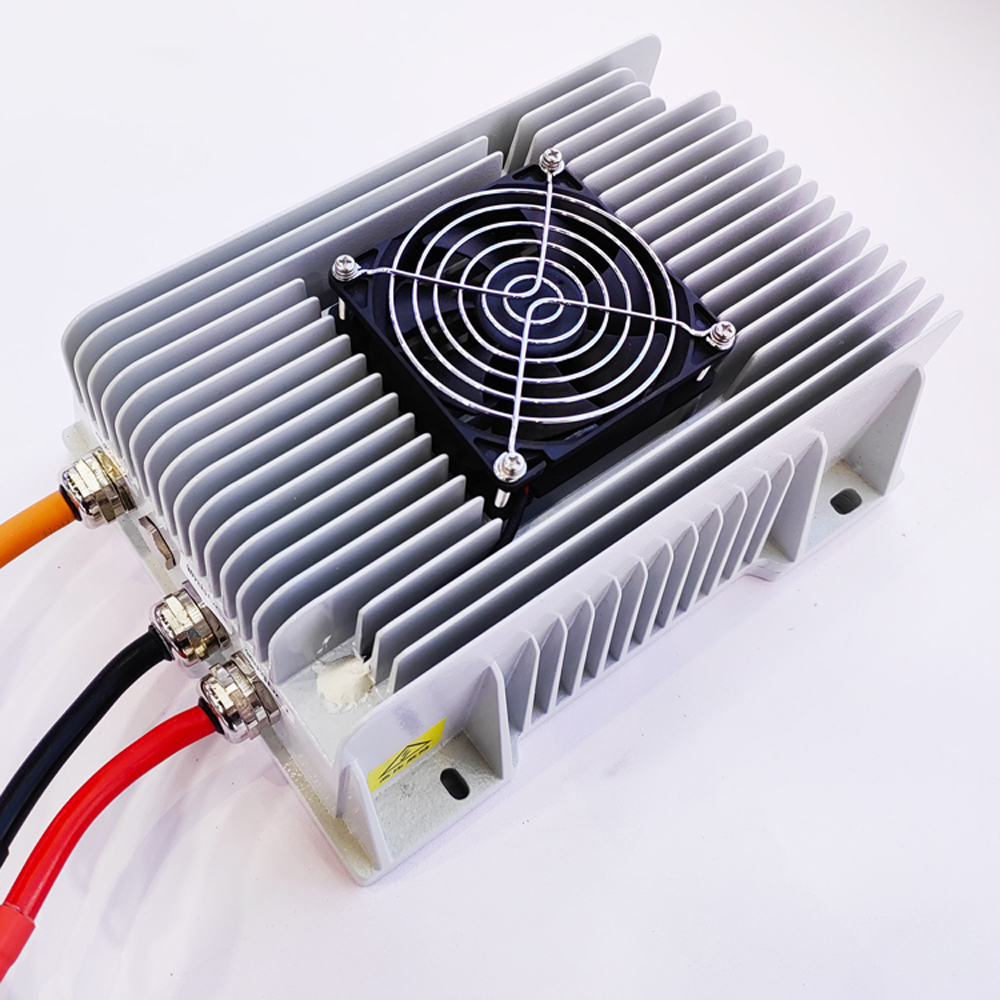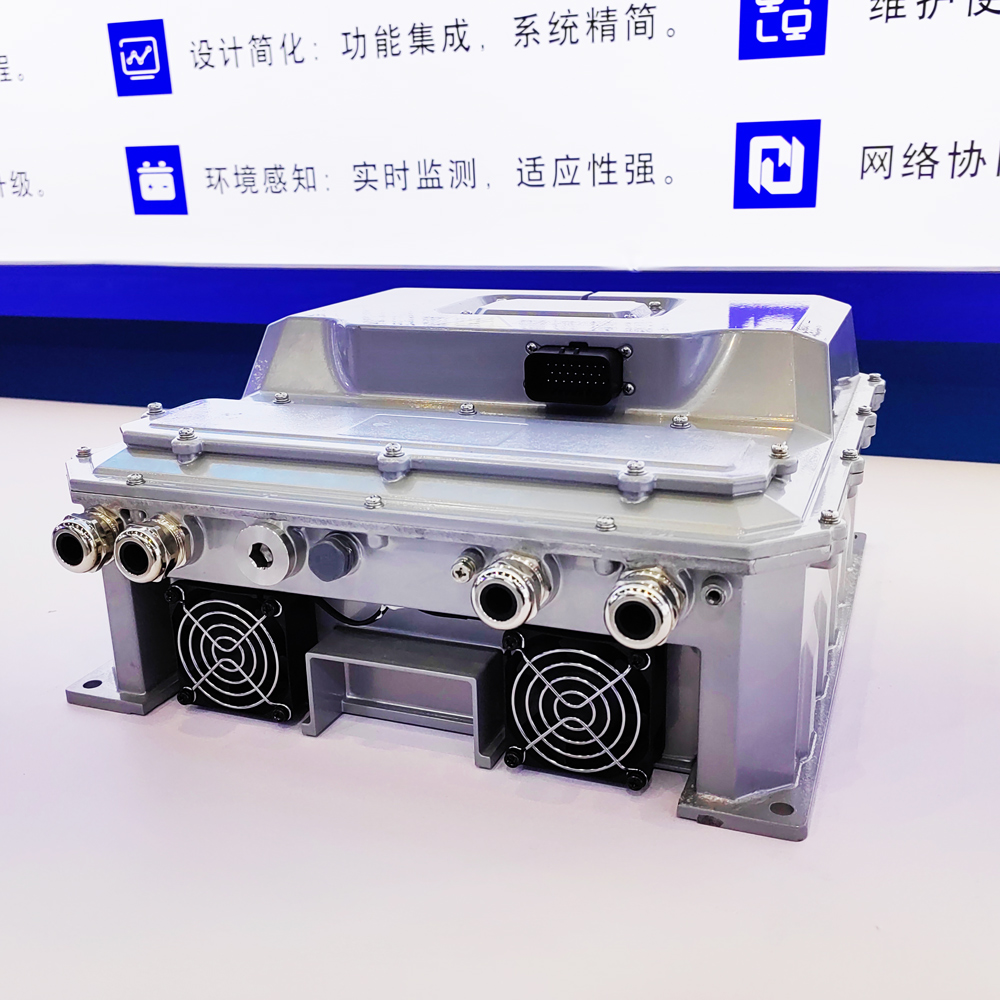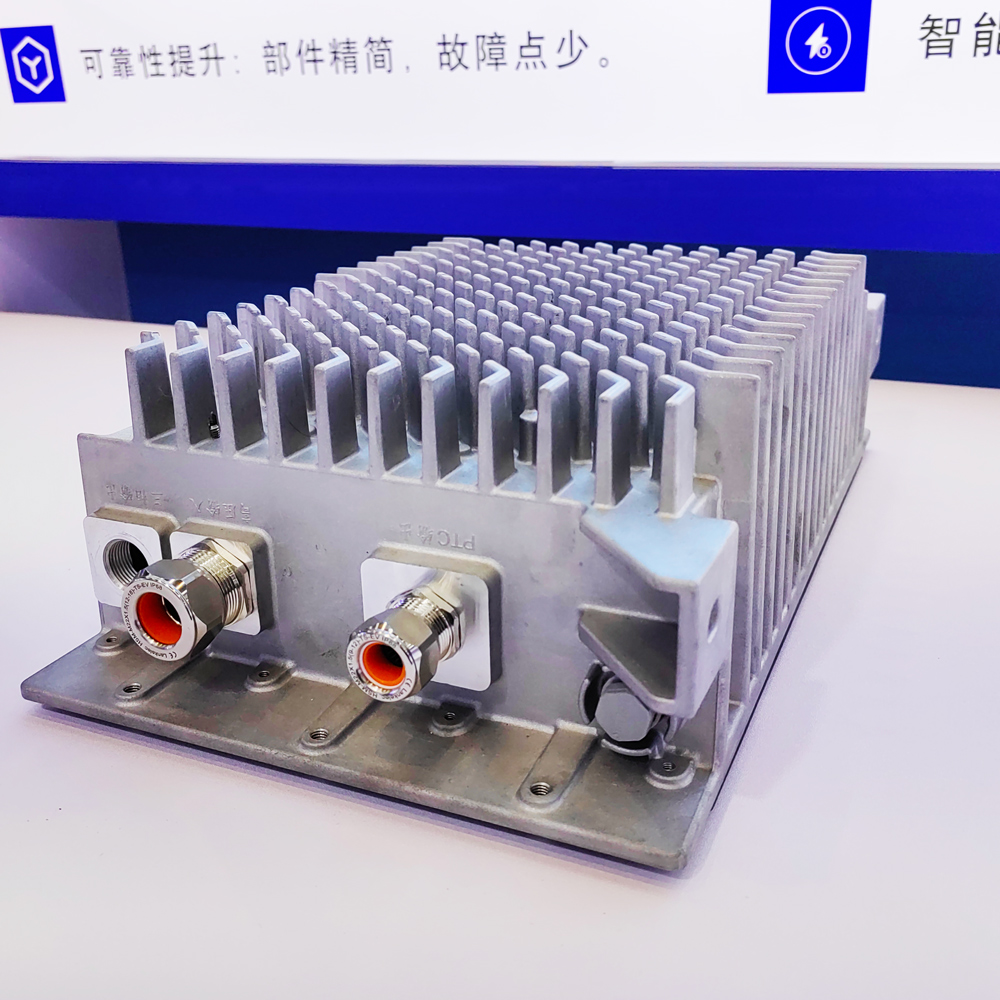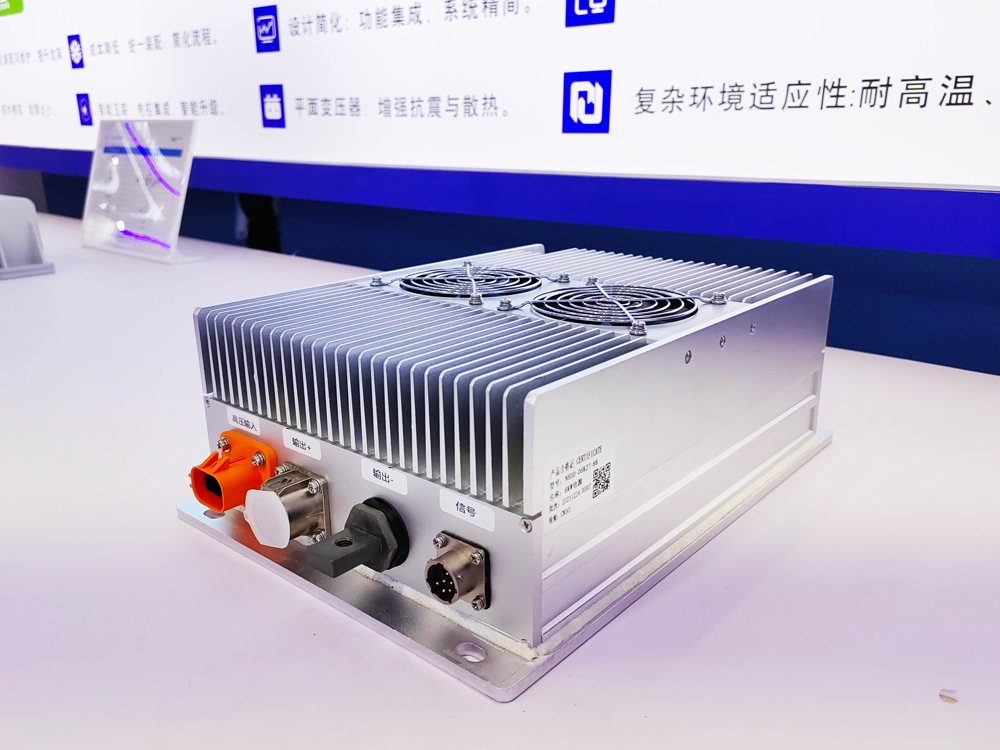Caixa de cadeia de frio digital inteligente
Caixa de cadeia de frio inteligente digital (armazém de cadeia de frio): Revolucionando a Logística de Temperatura Controlada Visão Geral do ProdutoA Caixa de Cadeia Fria Digital Inteligente...




DC/DC Converter for Electric Vehicles: Product Overview
Introduction
In electric vehicles (EVs), the high-voltage battery pack stores direct current (DC) energy unsuitable for powering low-voltage systems (e.g., lighting, infotainment, instrumentation). The DC/DC converter bridges this gap by efficiently stepping down high-voltage DC (typically 300-800V) to 12V DC, ensuring reliable power supply for auxiliary systems while maintaining compatibility with traditional automotive electrical architectures.
Key Functions & Features
Technical Architecture
Vantagens
Aplicações
| Conversor de potência CC - CC |
|---|
| Dados técnicos |
| Tensão de entrada: 185V~850V (personalizada) |
| Potência: 1,2KW/2KW/3KW |
| Corrente de fuga estática da bateria: ≤10mA |
| Controlo de entrada: controlo de ativação de hardware, comunicação CAN |
| Cabo LV, tensão suportável 700~400Vdc |
| Tensão nominal de saída: 27,5 ± 0,2Vdc, Corrente máxima de saída: 110A |
| Tempo de arranque da tensão de saída: dentro de 6s (com carga nominal) (entrada 540Vdc, saída 27,5Vdc, tempo de ensaio com carga nominal) |
| Potência de saída: 3000W (MAX) |
| Perda estática Corrente ≤10mA |
| Temperatura de funcionamento: - 40°C - 65°C |
| Resistência de isolamento ≥20MΩ/100Vdc |
| Nível de proteção: IP67 |
| Requisitos do cabo - cabo HV, tensão suportável 1500Vdc; |
Caixa de cadeia de frio inteligente digital (armazém de cadeia de frio): Revolucionando a Logística de Temperatura Controlada Visão Geral do ProdutoA Caixa de Cadeia Fria Digital Inteligente...
Ar condicionado para autocarros eléctricos NEWBASE: 8 tecnologias pioneiras que redefinem o conforto e a segurança dos passageiros Na NEWBASE,...
NEWBASE: Unidades de Refrigeração Avançadas para Soluções Logísticas de Cadeia de Frio de 4,2m Como a espinha dorsal da...
NEWBASE: Actuadores HVAC de precisão e soluções de controlo térmico para as necessidades globais do sector automóvel Na NEWBASE, nós...
Sistema Integrado de Gestão de Energia para Veículos Eléctricos: Visão geral do produto Arquitetura do produtoO Sistema Integrado de Gestão de Energia...
O condutor 2 em 1 (NB100-D-075-020) é utilizado principalmente em veículos comerciais de energia nova, que podem ser utilizados...